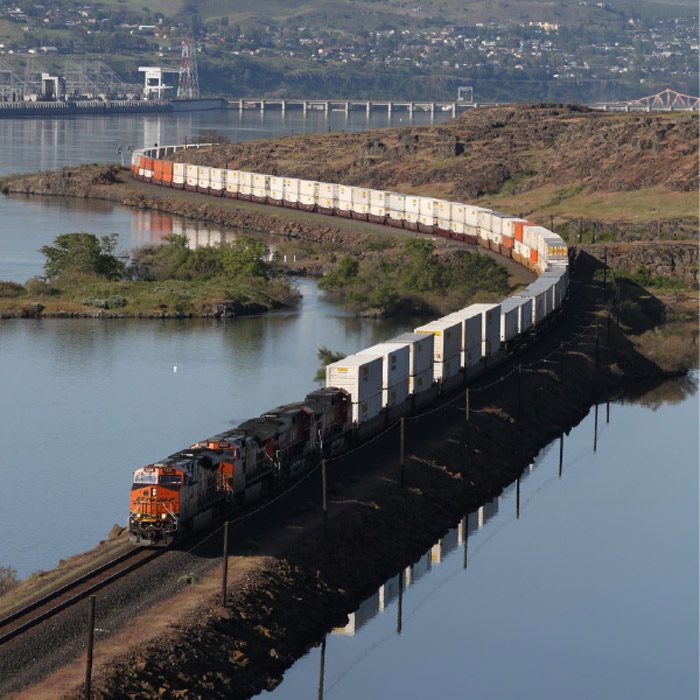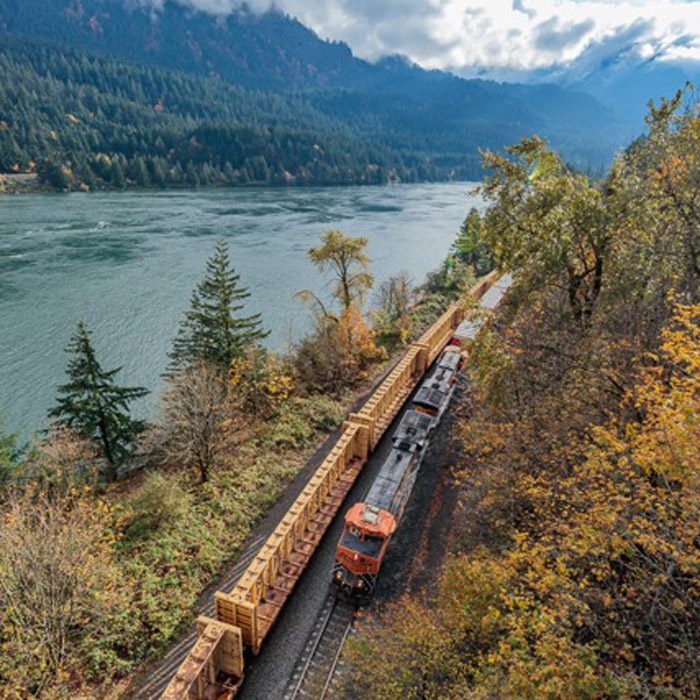It continues to be disappointing and frustrating to see how freight rail is being demonized because of the contempt by some against coal. The latest attempt is through a Health Impact Assessment (HIA) that was released this week by the Cowlitz County Department of Building and Planning. The HIA, which is tied to Millennium Bulk Terminals’ proposed coal export facility, relies heavily on the Washington Department of Ecology’s final Environmental Impact Statement (FEIS) for the project.
BNSF Railway strongly believes that Ecology’s FEIS makes several faulty assumptions about the railroad’s operations, resulting in agenda-tilting conclusions that overstate the potential health risks associated with railroad operations in Washington, and the United States.
Discrepancies about Locomotive Operations
For example, national locomotive fleet emission averages were used rather than BNSF’s locomotive fleet, which is the newest and cleanest in North America. Likewise, it assumed continuous locomotive operation despite the fact that 98 percent of BNSF’s fleet have idle-control devices that reduce air emissions and fuel consumption by automatically shutting down locomotives that aren’t being used. Neither Ecology or its Director attempted to reach out to BNSF to discuss these operational assumptions before publishing the FEIS. Nor did Ecology follow standard practice by making such assertions in the draft document, where claims can be evaluated, defended, and disputed. Instead, Ecology’s results-driven process hid until the final EIS their faulty assertions. This approach neither results in good science nor fair adjudication.
Following Established Protocols
If conducted according to established protocols, HIAs can convey information that is useful to communities in considering how a project may or may not impact them, and can be a tool for making health-based recommendations and tracking follow-up. In BNSF’s view, this particular HIA does not comport with established protocols. For example, beyond the participation of the Steering Committee, there appears to have been limited community and stakeholder engagement at key points in the HIA process. Moreover, the document does not appear to contain any meaningful recommendations, instead, it simply restates previously made FEIS recommendations. In fact, the majority of the statements in this HIA are based on data contained in Air Quality, Health Risk Assessment and greenhouse gas analyses that BNSF believes are flawed.
Faulty Data and Analysis
As we have previously stated, the FEIS failed to disclose key data and analysis from which its conclusions are based. For example, there is a “black box” when data is not published in the body of an FEIS or in its appendices to allow the public to understand the basis of conclusions. As noted, the FEIS also added a new health risk analysis for rail that was not included in the draft EIS. Our biggest concern with this new analysis is that it suggests diesel particulate emissions from locomotives substantially increase cancer risks in communities near railroad tracks in Washington. As further described in the next paragraph, the U.S. Environmental Protection Agency (EPA) has concluded there are no credible scientific studies that show diesel particulate emissions to be a carcinogen. In fact, the HIA calls out the FEIS for overestimating the so-called cancer risk … “In the FEIS, air pollution models estimate the increased cancer risk … This is most likely an overestimate of exposure resulting from DPM increases in the study area.”
The analysis is alarming as the EPA does not, and has never, published a risk assessment method for exposure to diesel exhaust. In addition, for many years, the EPA has regulated both the content of diesel fuel and emissions of particulate matter (PM) and nitrogen oxides (NOx) from locomotives and trucks. For locomotives, EPA regulations are based on progressively more stringent “tiers.” The most recent locomotive standards are “Tier 4” and apply to all locomotives built since 2015. Locomotives typically have a 30-year life and are remanufactured every eight to 10 years to improve operational efficiency and proactively reduce emissions. EPA standards for locomotives and trucks are phased in over time and balance the costs and benefits of further improvements. This means that the percentage of the overall locomotive and truck fleets that meet the newer, more stringent standards are constantly rising as older locomotives and trucks are replaced by newer units (the same approach that has worked well for automobiles over the past 40 years).
Importance of Freight Rail
It is also important to note that a March 2015 study by an economist at the Congressional Budget Office (CBO) compiled data from a variety of sources to estimate the unpriced external costs – that is, costs to society not covered by taxes – associated with freight transport by rail and truck. The study estimated that the external costs associated with emissions of particulate matter, nitrogen oxides, and carbon dioxide are three to five times higher for trucks than for railroads. In other words, moving freight by rail rather than by highway significantly reduces these emissions, fuel consumptions and costs to society.
Freight rail is by far the most environmentally sensitive way to move goods on land. For example, an intermodal train effectively takes the equivalent of 280 trucks off the highway, which saves two-thirds the fuel of trucking and reduces emissions, highway traffic congestion and maintenance for public highways.
It is important to provide analyses and make assumptions with the most current and accurate information, and to communicate this information in a responsible, unbiased manner to the public. Because the HIA largely contains blanket conclusions based on information pulled from these flawed data sources, BNSF doesn’t believe that this particular HIA conveys data or conclusions that are accurate or useful.




